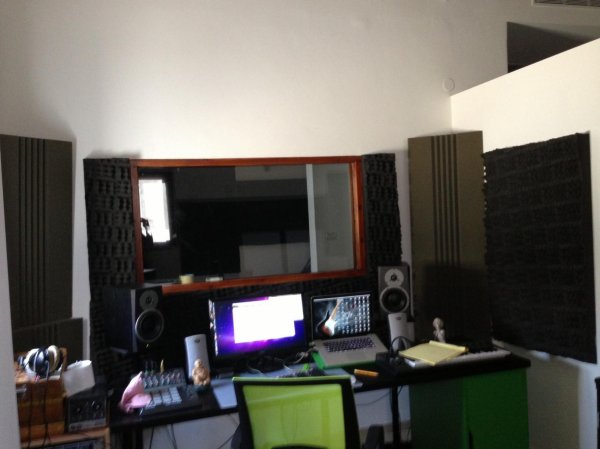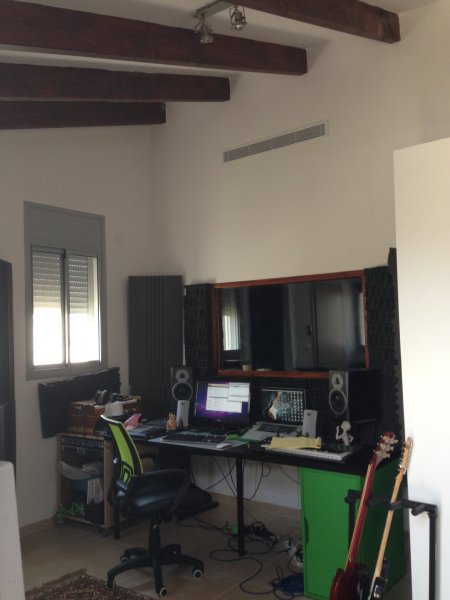I think what you may be confused about it is what an SBIR is. If you understand that, the formula will make more sense to you. An SBIR results in a null caused by indirect sound wave that negatively interferes with the direct sound wave from your speaker to your listening position. That's what path length difference in the formula is referring to. If I were you I would start by measuring each speaker to see if the null is the same. Then I look at uniform boundaries around your speakers. Your pictures are not that great. But it looks like you have sidewalls that are fairly uniform on either side of each speaker. That would be my guess, but I can't know for sure without using that formula and measuring. It could also be the frontwall. You need to know which boundary is causing the SBIR before taking any further actions like moving speakers. If it is the sidewalls, you could try moving your speakers closer into the center of the room, away from the sidewalls. That may help reduce the null, but could also reduce the center frequency of the null. If it is the sidewalls, your room treatments are ineffective at that frequency on the sidewall. You will need some very good bass traps in the correct position to help mitigate the SBIR. But, first you need to know exactly where it's coming from. If it is the sidewall, I wouldn't recommend crossing your system over at the SBIR frequency and put the subs somewhere else in your room. I think crossing over at such a high frequency would be very difficult to integrate properly. I think you are better off changing speaker positions and using much more powerful room treatments. I am glad you brought this up, because almost every room has this problem and most folks don't even realize it's there. Depending on the shape of the null, it may not be very audible. It would be good to post your measurements. SBIRs are a problem but it's almost impossible to totally eliminate all of them because most of us don't listen in giant auditoriums.







